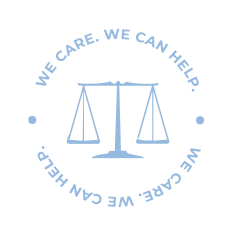Becoming a firefighter is a dream job for many young men and women. It is one of the most respected professions, risking their lives for others’ safety- saving people from collapsing buildings, heat exhaustion, smoke inhalation, mental stress. However, there are dangers that firefighters weren’t aware of: the fire-suppressing foams and protective garments that they wear.
Firefighters’ “bunker gear” contains significant amounts of chemicals known as PFAS, the “forever chemical” that is linked to a host of health problems.
What is PFAS?
PFAS is a human-made chemical joined by carbon and fluorine, one of the strongest bonds made in organic chemistry, meaning that PFAS chemicals don’t degrade easily. They stick around the human body, stable water, and the environment for a long time. Certain PFAS can accumulate and stay in the human body for a long time, which is why they are called “forever chemicals.” Chemicals included in this group include:
- Perfluorooctanoic acid
- perfluorononanoic acid (PFNA)
- perfluorooctane sulfonic acid (PFOS)
- perfluordecanoic acid (PFDeA)
- perfluorohexane sulfonic acid (PFHxS)
PFAS can be found in a wide range of consumer products that people use daily, such as cookware, pizza, boxes, and stain repellants. PFAS were widely used to make products more stain-resistant, waterproof and/or nonstick. For example, PFAS were used in the manufacture of products that:
- Keep food from sticking on cookware
- Keep food packaging from sticking to food
- Make shoes, clothes, and mattresses more waterproof
- Make sofas, carpets, and clothing resistant to soil, stains, and water
- Make food packaging resistant to grease absorption
Scientists are still working to understand the full effects of PFAS chemicals on the human body. PFAS is a resilient chemical that benefits many products but can be very detrimental to human health. State and federal regulatory agencies are developing regulatory strategies to address PFAS in the environment.
In what other ways does PFAS exposure affect the general population?
Because these chemicals have been used in various consumer products for decades, most people have been exposed to PFAS without knowing. These chemicals can enter our body with foods such as microwavable popcorn, food in takeout containers, or fish from contaminated water. Today, PFAS’ nonstick qualities make them useful in products such as food wrappers, tents, umbrellas, carpets, and firefighting foam. The chemicals can be found in the manufacture of plastic and rubber and in insulation for wiring.
The CDC says PFAS can be found in air, soil, and water. In addition, some areas have drinking water sources with high enough levels of PFAS to raise concern. These communities are living in fear and uncertainty, wanting answers to what is affecting their health.
Other ways that PFAS can be found and affect the general population include:
- Living organisms, including fish, animals, and humans, where PFAS can build up and persist over time.
- workplace, including production facilities or industries
What is the link between PFAS and firefighters?
Studies show that firefighters may have been exposed to PFAS through exposure to the combustion of products containing the substances in the foreground. In addition, firefighters may have been exposed to PFAS through firefighting foam. PFOS was used in manufacturing firefighting foam through the early-2000s, and it may be that some of that foam is still being utilized.
The man-made chemical compounds can be found in a wide range of consumer products, including nonstick products, polishes, firefighting foam, grease, uniforms. In addition, manufacturers of firefighting gear in the U.S. aren’t required to disclose the chemicals in their products The issue is that firefighters were never told about the health consequences of using AFFF and despite early internal findings of its toxicity, there wasn’t a big enough effort made to stop it from escaping into the environment.
It is still unsure as to whether firefighters are inhaling or ingesting from their bunker gear the chemical. Additional research is currently underway to understand the breadth and depth of the concern. In addition, because of the known dangers, the chemicals are being phased out of most products, but it is unclear whether their replacements are safer.
How does PFAS affect women firefighters?
Although past findings mainly focused on male firefighters, through science and research, it has been found that PFAS affects women firefighters. Female firefighters are more likely to develop cancer after working with carcinogens such as those found in firefighting foam or aqueous film-forming foam (AFFF). AFFF is a firefighting tool utilized to put out fires such as oil-based flames and fires caused by jet fuel. Researchers believe that firefighters were contaminated from equipment and other items at a firefighting station, as well as contaminated training areas. There was an increase in link to breast cancer.
In what other ways can PFAS affect human health?
Studies have shown a relationship between levels of PFAs in blood and harmful health effects, including affecting the general population. However, these studies have only analyzed a small number of chemicals, and not all PFAs have the same health effects. Research has suggested that high levels of certain PFAs may be:
- Increase in cholesterol levels
- Increase the risk of thyroid disease
- Decrease how well the body responds to vaccines
- Increase the risk of serious conditions like high blood pressure or pre-eclampsia in pregnant women.
- Lower infant birth weights; however, the decrease in birth weight is small ad may not affect the infant health
Currently, there is no routine test that can be performed in a doctor’s office, since perfluoroalkyl compounds can be measured in blood. The blood test for PFAS exposure indicates the levels of specific PFASs in your body at the time you were tested but doesn’t predict future health effects.
What are some ways a PFAS attorney can help you?
There have been a number of lawsuits that have been filed against manufacturers of firefighting foam. These claims, among others, that the companies have failed to warn users and other victims of possible health problems from the PFAS. The type of lawsuit will depend on the type of exposure you or a loved one has experienced and other facts in the case.
Damages that you may be able to recover relate to:
- Medical bills and other expenses
- Lost time from work
- Prescription drugs
- Pain and suffering
- Decreased work capacity
- Other damages as appropriate in your case
At The Carlson Law Firm, we care
Due to the widespread PFAS exposure, there are numerous people that have developed illnesses and diseases, difficulting their lives. However, it is important to remember that companies have a responsibility to comply with federal regulations and protect citizens from any harm their products may cause. At The Carlson Law Firm, we are currently investigating claims in all 50 states concerning the health effects from PFOA AND PFOS. Contact us today if you or a loved one suspects PFAS chemical contamination led to injuries to discuss your legal options. We care, we can help.





